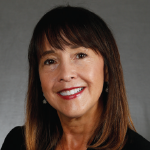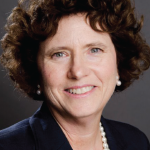Editor’s note: The new Pillar Talk column is developed by the ARHP Executive Committee in an effort to share information about ongoing activities related to our four pillars: Education, Practice, Research and Advocacy.
The ARHP Practice Committee is committed to addressing the current needs and evolving practice opportunities for health professionals working in rheumatology. A key area of focus over the past two years has been expanding our understanding of the different, yet complementary, roles of various members of the interdisciplinary healthcare team.
Interdisciplinary Approach to Care
A decade ago, fewer than eight different types of health professionals were described on the Members of the Rheumatology Health Care Team page on the ACR website. Today, 14 health professionals’ roles, along with the very central role of the patient, make up the described team, with new practitioners being added every year. This speaks to the evolving and important contributions these health professionals make in co-managing patients with rheumatic conditions and in addressing the growing workforce shortage.
To help patients and their families better understand how these various team members work together to provide optimal care, the ARHP Practice Committee has developed case studies to increase understanding of how the team approach works (see The Rheumatologist May 2017). The first case study highlighted six different team members in the care of an adult with newly diagnosed rheumatoid arthritis.
Two other cases are currently under development and include an older adult with knee osteoarthritis and a young patient with juvenile idiopathic arthritis. Each case will link the reader to additional resources on the ACR website, as well as partner organizations, such as the Arthritis Foundation.
To make these cases of additional value to rheumatology professionals, presentation slide decks are being prepared for educational purposes. Many of our members provide instruction to students in entry-level training programs, during clinical placements and to clinical and support staff new to rheumatology practice. These prepared PowerPoint presentation packages will expand on the interdisciplinary case studies and serve as valuable teaching tools for in-class, blended learning and interdisciplinary education. We look forward to highlighting these additional cases and resources in upcoming issues of The Rheumatologist.
The Shrinking Workforce
The rheumatology workforce shortage is a powerful reality. Data from the 2015 ACR/ARHP Workforce Study of Rheumatology Specialists highlighted in the January 2017 and May 2017 issues of The Rheumatologist remind us that there will be a shortage of 3,800 rheumatologists in the U.S. by 2025. One promising solution is to provide specialty training in rheumatology to nurse practitioners (NPs) and physician assistants (PAs).
In the past 10 years, we have observed a rapid acceleration in the number of NPs and PAs in the ARHP. There is great interest in further expanding the number of NPs and PAs providing rheumatologic care—especially in rural and other underserved areas. An exciting development within the College was the recent approval of the NP/PA Rheumatology Curriculum Outline, which can serve as a critical resource to facilitate such training. The ARHP will soon submit an application to the Rheumatology Research Foundation to help secure fellowship training funds to further promote such training. The ARHP is meeting the needs for this additional training through its expanded educational offerings, as described in the June issue of The Rheumatologist.
In other countries, such as Canada and the U.K., training has focused on expanding the scope and advancing the knowledge and skillsets of physical therapists, occupational therapists and nurses to take on triage and follow-up activities in rheumatology practices. Innovative, comprehensive and well-structured programs, such as the Advanced Clinician Practitioner in Arthritis Care (ACPAC) program, ensure that practitioners are appropriately trained to take on extended roles and scopes.
We have initiated a conversation with our colleagues in the Canadian Arthritis Health Professions Association (AHPA) and our respective Research Subcommittees to explore the impact of these differing approaches and models of care on patient outcomes, experience and access to care. The ARHP Practice Committee will host a session on Nov. 6 at 11 a.m. during the 2017 ACR/ARHP Annual Meeting in San Diego on in-person and online continuing education opportunities in the U.S., Canada and abroad. Jointly presented by representatives from the AHPA and the ARHP, this session will be of interest to clinicians, educators and researchers wanting to learn more about these educational offerings aimed at increasing the knowledge and clinical skills for those working in rheumatology. This may lead to further discussion of strategies to address the rheumatology workforce gap in the U.S. and other countries.
Member Outreach
Over the next 18 months, the ARHP Practice Committee will continue its efforts to foster collaborative interdisciplinary professional practice throughout the continuum of care. We will work in partnership with the ACR Committee on Rheumatologic Care (CORC) to improve communication and healthy exchange of ideas across our organization. Two ARHP members who sit on CORC are invited to our meetings to facilitate this communication and solicit feedback from the ACR on new ARHP Practice Committee initiatives.
We will look for opportunities to reach out to our members through better use of social media and to enhance dialogue among practitioners through such platforms as LinkedIn, blogs and listservs. This expanded collaboration will be important because our committee has also been tasked with examining the impact of the Medicare Access and CHIP Reauthorization Act of 2015 (MACRA), which was passed on April 16, 2015, and healthcare reform on health professional practice. The ARHP Practice Committee will also work to identify and develop member resources, such as quality of care assessment and reporting tools.
In addition, the committee will work closely with the ARHP senior representative to the ACR Government Affairs Committee regarding the rapidly evolving impact of healthcare reform on rheumatology professionals.
We are grateful for our outstanding staff support, enthusiastic learners and dedicated ARHP Practice Committee members and special projects volunteers. If rheumatology practice issues and professional resources are an interest of yours, consider volunteering as a committee member or to work on a special project in the coming year. If interested, take a few moments to complete the Volunteer Opportunities Survey. Please direct any questions or feedback regarding this article to [email protected].

Marie D. Westby, PT, PhD, the ARHP Practice Committee chair, completed her doctorate in rehabilitation sciences at the University of British Columbia in 2010. She is the physical therapy teaching supervisor at the Mary Pack Arthritis Centre and an associate researcher at the Centre for Hip Health and Mobility, both located in Vancouver, B.C., Canada.
 ARHP President Afton L. Hassett, PsyD, is a clinical psychologist and an associate research scientist in the Department of Anesthesiology at the University of Michigan. As a principal investigator at the Chronic Pain & Fatigue Research Center, she conducts interdisciplinary research related to exploring the role of cognitive, affective and behavioral factors in pain and functioning in rheumatologic populations.
ARHP President Afton L. Hassett, PsyD, is a clinical psychologist and an associate research scientist in the Department of Anesthesiology at the University of Michigan. As a principal investigator at the Chronic Pain & Fatigue Research Center, she conducts interdisciplinary research related to exploring the role of cognitive, affective and behavioral factors in pain and functioning in rheumatologic populations.



